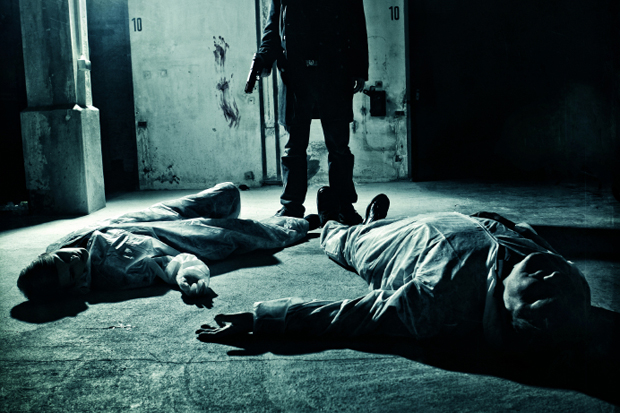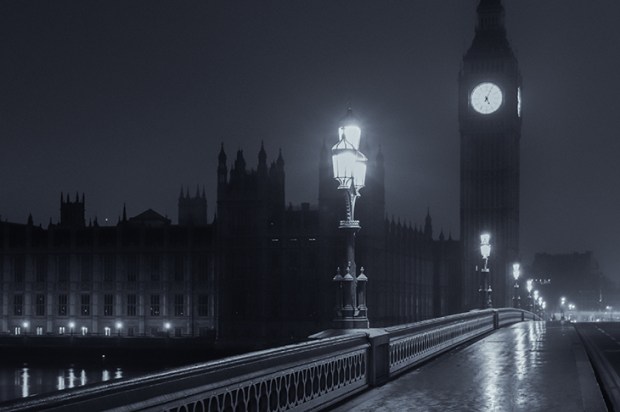We fully expect con artists to be caught in a sting themselves, but even with that thought constantly in mind I was still hoodwinked by Nicholas Searle’s The Good Liar (Viking, £12.99, pp. 288). The surprises start on page one: Roy Courtnay is in his nineties, with a longstanding pedigree of swindles behind him, and he relishes the idea of one last scam. His mark is Betty, a woman he meets via an internet dating site. Roy’s a slippery character, who adopts, or even steals, new identities as he chooses. It’s all about disguise, and telling a good lie. The perfect lie.
There are dangers, not least existential. At one point he speaks of the difficulty of maintaining ‘the flickering self that was Roy Courtnay’. A series of personas are added one on top of the other, and a journey back into second world war Germany reveals the moment when Roy’s first mask slips into place, as the requirement to lie becomes a matter of life and death. With Betty he seems to have a way out of the constant need to dissemble, if only he could put the scam aside. In the end, however, even love is seen to be a confidence trick.
If Jack Raphael is genuinely in love in Thomas W. Hodgkinson’s Memoirs of a Stalker (Silvertail, £10.99, pp. 268), it’s a love twisted beyond all normality. Following rejection by his girlfriend, Mills, he decides to follow her. His stalking takes place entirely in her house. He moves in without Mills or her flatmate knowing, gliding silently around the rooms, inhabiting alcoves, niches and cubbyholes. He prowls and slinks from one blind spot to another, all the time watching and listening. The girls throw a dinner party and Jack is there, a whisper, a shadow. A scribbled note in Mills’s copy of The End of the Affair reads: ‘The invisible style. Greene writes so well, he ceases to exist.’ Paradoxically, as Jack fades into the wallpaper, Hodgkinson becomes more prominent. His style fills every sentence to bursting, with puns, rhymes, manic wordplay, even pages of film script. Jack is the unseen point of view shot, gazing with hope and despair on the object of his dreams. When he’s forced to kill in order to maintain his secrecy, the novel becomes a brilliantly surreal thriller. Even at the end, we’re unsure if the killer has truly left the house, or whether he still walks there, hidden in the words.
Set in an isolated town on the northernmost edge of Iceland, Nightblind by Ragnar Jónasson (Orenda, £8.99, pp. 276) has the perfect setting for an old-fashioned murder mystery, especially as the long winter night sets in. Iceland is described as ‘the safest place on earth’, so the death of a police officer shocks the residents, not least Ari Thór Arason, the only other detective in the town, who sets out to find the murderer. Chapters taken from the account of a patient being treated in a psychiatric hospital only make sense in the final pages of the novel, as the identity of the journal’s author is revealed, and this brings a frisson of surprise.
But in itself the journal adds little to the story, and the book’s suspense level suffers. I was waiting for the cold and the dark to take hold, for the plot to tighten around me like ice on a freezing river, but the language is a little too plain for such purpose. The best part is the brittle, agonising relationship between Arason and his girlfriend, Kristín: here the temperature really falls to zero.
Tim Baker’s Fever City (Faber, £12.99.pp. 432) has a trio of plots all converging on one of the most famous places in the world: Dealey Plaza in Dallas as John F. Kennedy’s motorcade enters the sights of a high-powered rifle. A private eye in 1960 investigates the kidnapping of a tycoon’s son; a hitman in 1963 takes on the job of killing the president; and the private eye’s son in 2014 investigates JFK’s death, trying to separate the facts from the conspiracy theories.
This is a novel packed with tough-guy poetry, deeply felt emotions and startling images. One example: Baker describes the evidence of the assassination as ‘Blow Up meets the Rorschach Test’. The story twists and turns at speed like the famous ‘magic bullet’ that may or may not have killed the president. Through time and space the three stories converge on the Plaza, and its secrets. As Hastings the hitman prepares to sabotage the killing, he ponders, ‘One slip and the nation’s arteries would split open.’ Well, there was a slip, and the nation suffered terribly. And the bullet is travelling on to this day, still affecting us, still capable of generating new stories: not least this superb debut novel. A direct hit.
Got something to add? Join the discussion and comment below.
Get 10 issues for just $10
Subscribe to The Spectator Australia today for the next 10 magazine issues, plus full online access, for just $10.
You might disagree with half of it, but you’ll enjoy reading all of it. Try your first month for free, then just $2 a week for the remainder of your first year.



![[Getty]](https://www.spectator.com.au/wp-content/uploads/2019/07/Whitby.jpg?w=620)










Comments
Don't miss out
Join the conversation with other Spectator Australia readers. Subscribe to leave a comment.
SUBSCRIBEAlready a subscriber? Log in